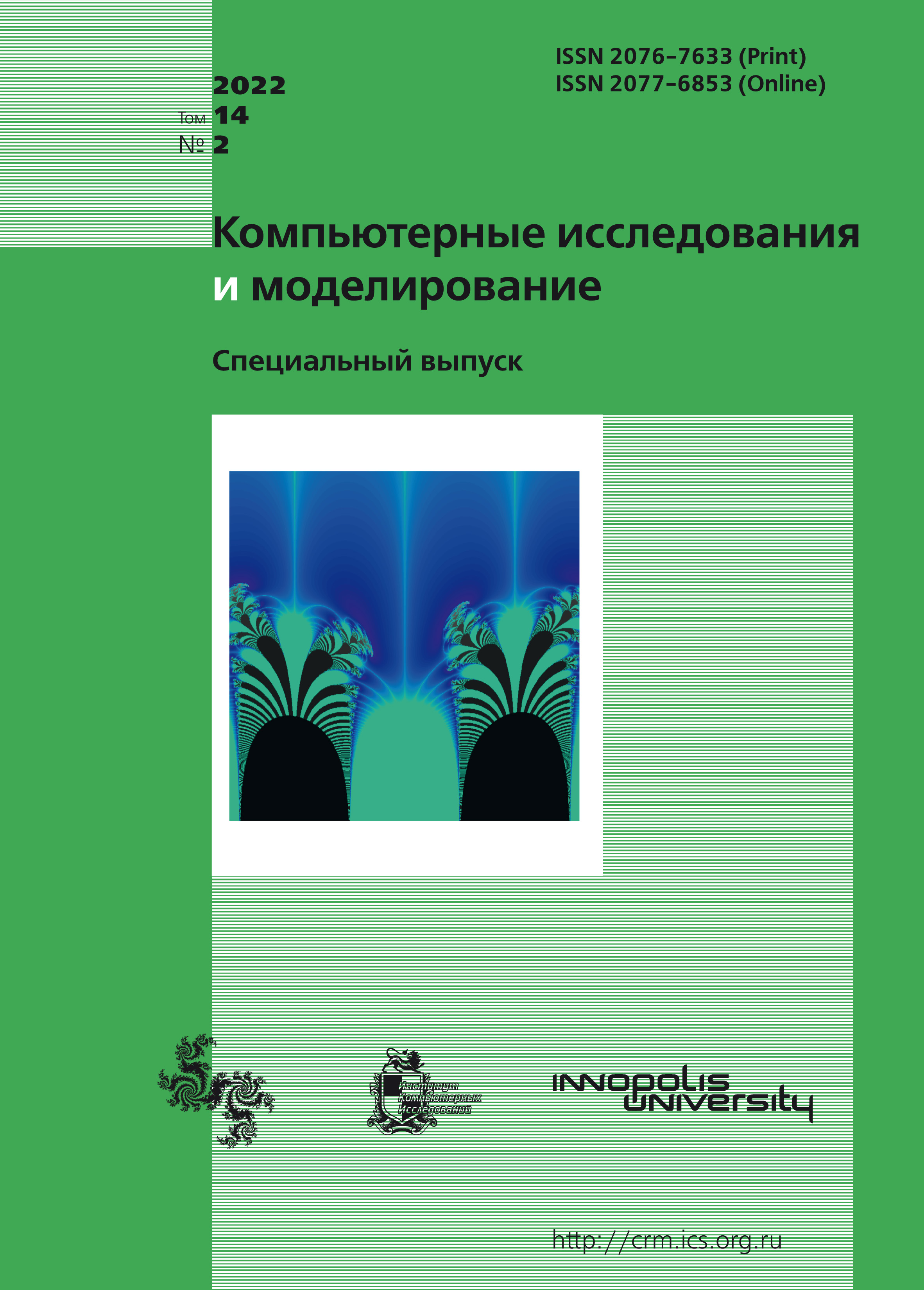All issues
- 2024 Vol. 16
- Issue 1 (special issue)
- 2023 Vol. 15
- 2022 Vol. 14
- 2021 Vol. 13
- 2020 Vol. 12
- 2019 Vol. 11
- 2018 Vol. 10
- 2017 Vol. 9
- 2016 Vol. 8
- 2015 Vol. 7
- 2014 Vol. 6
- 2013 Vol. 5
- 2012 Vol. 4
- 2011 Vol. 3
- 2010 Vol. 2
- 2009 Vol. 1
On accelerated adaptive methods and their modifications for alternating minimization
 pdf (699K)
pdf (699K)
In the first part of the paper we present convergence analysis of AGMsDR method on a new class of functions — in general non-convex with $M$-Lipschitz-continuous gradients that satisfy Polyak – Lojasiewicz condition. Method does not need the value of $\mu^{PL}>0$ in the condition and converges linearly with a scale factor $\left(1 - \frac{\mu^{PL}}{M}\right)$. It was previously proved that method converges as $O\left(\frac1{k^2}\right)$ if a function is convex and has $M$-Lipschitz-continuous gradient and converges linearly with a~scale factor $\left(1 - \sqrt{\frac{\mu^{SC}}{M}}\right)$ if the value of strong convexity parameter $\mu^{SC}>0$ is known. The novelty is that one can save linear convergence if $\frac{\mu^{PL}}{\mu^{SC}}$ is not known, but without square root in the scale factor.
The second part presents modification of AGMsDR method for solving problems that allow alternating minimization (Alternating AGMsDR). The similar results are proved.
As the result, we present adaptive accelerated methods that converge as $O\left(\min\left\lbrace\frac{M}{k^2},\,\left(1-{\frac{\mu^{PL}}{M}}\right)^{(k-1)}\right\rbrace\right)$ on a class of convex functions with $M$-Lipschitz-continuous gradient that satisfy Polyak – Lojasiewicz condition. Algorithms do not need values of $M$ and $\mu^{PL}$. If Polyak – Lojasiewicz condition does not hold, the convergence is $O\left(\frac1{k^2}\right)$, but no tuning needed.
We also consider the adaptive catalyst envelope of non-accelerated gradient methods. The envelope allows acceleration up to $O\left(\frac1{k^2}\right)$. We present numerical comparison of non-accelerated adaptive gradient descent which is accelerated using adaptive catalyst envelope with AGMsDR, Alternating AGMsDR, APDAGD (Adaptive Primal-Dual Accelerated Gradient Descent) and Sinkhorn's algorithm on the problem dual to the optimal transport problem.
Conducted experiments show faster convergence of alternating AGMsDR in comparison with described catalyst approach and AGMsDR, despite the same asymptotic rate $O\left(\frac1{k^2}\right)$. Such behavior can be explained by linear convergence of AGMsDR method and was tested on quadratic functions. Alternating AGMsDR demonstrated better performance in comparison with AGMsDR.
Indexed in Scopus
Full-text version of the journal is also available on the web site of the scientific electronic library eLIBRARY.RU
The journal is included in the Russian Science Citation Index
The journal is included in the RSCI
International Interdisciplinary Conference "Mathematics. Computing. Education"






